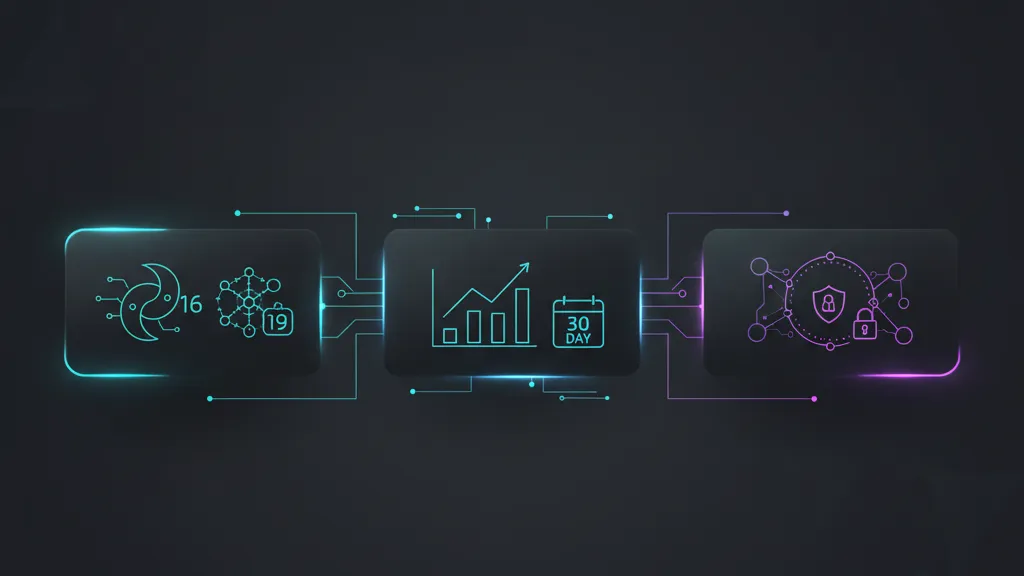Consider how concerning this: You've worked hard to create your startup's internet presence outstanding, but now you discover that a lot of intriguing customers—those that live outside your home country—are dropping out on your website because it only speaks one language. I know how you feel. As a business owner who has been through the ups and downs of going digital, I can relate to that experiencing very well. In 2025, when the entire globe is so connected, attending global isn't an optional option; it's a must for making money and getting leads. That is where making an internet presence that works in more than one language applies in. It might alter the game and speed up your online transformation.
Our team of US-based IT studio, BYBOWU, makes cutting-edge mobile and web applications with the latest technologies, such as Next.js, React Native, Laravel, and AI-powered solutions. We have assisted many new businesses and entrepreneurs break down language barriers in an inexpensive manner, converting local sites into international powerhouses. This guide will show you through each step how to make a website with multiple languages. We are going to focus on straightforward techniques that's in line with the newest developments in internet development. Whether or not you're hoping to reach prospects in other countries or you want to form your online presence easier for visitors, let's get started with having it communicate all the languages of the world.
Why Your Business Needs a Web presence in Many Languages in 2025
Let's acknowledge that if you really want to run your own company in 2025, you'll have to contend with organizations all over the world. There are over five billion people who use online resources around the world, yet more compared with half of them would rather see information in their own language. Not offering assistance in several languages is like disposing of money on the subject. Adding choice of language has helped beginnings doubling their leads and additionally makes them more trustworthy and relevant. Recent research developments related to localizing show that websites with multiple languages can increase reactions by up to 30% if you're trying to reach people in Europe or Asia.
It's also about connecting on an emotional level. If a French business owner visits your English-only site, they might feel out of place and leave before you have a chance to show them how valuable you are. A multilingual approach solves problems in the real world, such as cultural differences and accessibility, and opens up new markets, which can lead to more sales. And with AI improvements, it's easier and cheaper than ever. We use these trends in our services at BYBOWU to help you reach people all over the world without spending a lot of money.

Key Things to Think About When Planning Your Multilingual Website
Take a deep breath and plan before you start coding. This may sound hard, but having a good plan from the start will save you trouble later. First, figure out who your target audiences are and what languages they speak. Google Analytics and other tools can show you where your visitors are coming from. This can help you decide which languages to focus on, such as Spanish, Mandarin, or German, to get the most leads.
Next, choose how to structure your site: with subdirectories (like /en/ or /fr/), subdomains (like fr.yoursite.com), or country-code top-level domains. When it comes to global website SEO, subdirectories are often the best choice because they combine domain authority. Also, think about content localization, which means more than just translation; it also means changing idioms and cultural references. I know what it's like to see a literal translation fail because it didn't hit the right emotional note. Also, plan for scalability. Using frameworks like Next.js makes it easy to add languages later.
Think about solutions that are cost-effective when it comes to your budget. AI-powered tools can do the first translations, but they should be checked by a person to make sure they are correct. This planning stage is very important for digital transformation because it makes sure that your multilingual website fits with your business goals, such as making more money by appealing to more people.
Picking the Best Technologies for Multilingual Development
The tech stack can make or break your web development project. We at BYBOWU swear by Next.js for its built-in internationalization features when it comes to modern multilingual websites. Next.js 15 has an app router that makes it easy to route to different locales and render on the server side. This is great for performance and SEO. You can use libraries like next-intl or i18next to handle translations that change over time.
Laravel is great for handling complex data on the backend because it has strong multilingual support through packages like laravel-localization. You have a full-stack solution that's ready for AI-powered translations when you add React Native for mobile extensions. In 2025, AI integration for real-time language switching is expected to rise, cutting development time by 40%.
Why is this important? Choosing the right tools makes sure that your site works and is optimized for users all over the world. Visit our services page to see how we customize these technologies for startups like yours, providing creative and affordable multilingual solutions.
Best Translation Tools and Plugins for 2025
There are a lot of translation plugins to choose from in 2025, but you should only look at the ones that work well with your stack. AI-powered libraries like Google Translate API or DeepL make Next.js sites run smoothly, but if you want more control, Weglot or TranslatePress are better options. For example, Weglot can automatically translate text and let people edit it, which is great for keeping quality high.
WPML is still a popular choice for multilingual WordPress sites because it supports more than 60 languages and has features that are good for SEO. Polylang is another light option for setups that don't cost a lot. Based on what we've seen at BYBOWU, combining AI with these plugins lowers costs and improves accuracy. For example, neural machine translation gets better every year.
It might seem like a lot to take in, but starting with just one or two languages is a good way to get your feet wet. We've made websites that went from only speaking one language to speaking multiple languages in just a few weeks. This helped us get leads from markets we hadn't tapped into before. Check out our portfolio of projects from around the world for ideas.
Putting Global Website SEO Strategies into Action
It's not just about doing the same thing over and over again for multilingual sites; it's about smart localization. Hreflang tags are a good place to start because they tell search engines which language version to show, which stops problems with duplicate content. In 2025, when voice search is popular in many languages, make sure your site works well for conversational queries in each location.
Do keyword research for each language; don't just assume that direct translations work. For instance, "multilingual SEO" could become "SEO multilingue" in French, but the way people say things in different places is important. Tools like Ahrefs and SEMrush can help you find high-volume keywords that are specific to certain areas. To improve rankings, you should also translate meta tags, URLs, and alt text for images.
Cannibalization, or when pages compete with each other, is a real-world problem. Use canonical tags and a clear sitemap to fix it. After using these global website SEO strategies, we've seen clients' organic traffic go up by 50%. It's all about making your site easy to find all over the world and turning visitors into loyal customers.
Best ways to do things and things to stay away from
To make your multilingual website work well, put user experience first. Use flags or dropdowns to make it easy to switch languages, and use geolocation to find the right language automatically, but always let users change it. Test everything carefully; broken translations can make people lose trust faster than you think.
Don't make mistakes like only translating for machines that sound robotic or not optimizing for mobile, since most people around the world use phones to browse the web. Use AI to make things more efficient, but make sure to proofread by hand to make sure they sound right. Security is also very important. Multilingual sites often handle more data, so strong measures keep them safe.
From my own experiences helping founders, the most important thing is to keep trying. Launch, get feedback, and improve. This method not only improves your online presence, but it also helps your business grow over time. Our team at BYBOWU is here to help you avoid these traps if you're ready.
Conclusion: Make Your Website Available to the Whole World Today
Making a multilingual website that can be seen around the world is more than just a technical job; it's also an emotional investment in the future of your business. You can make more money and get more leads by using new tools like Next.js and the best translation plugins 2025 to get around language barriers. We've talked about planning, tech choices, SEO, and best practices, all of which are meant to help you do well in the changing world of 2025.
Make your site available to people all over the world. Set up a free consultation for today! You can get in touch with us through our contact page to talk about how BYBOWU can help you make your dreams come true. For personalized help with making a multilingual website, email us at [email protected].





Comments
Be the first to comment.